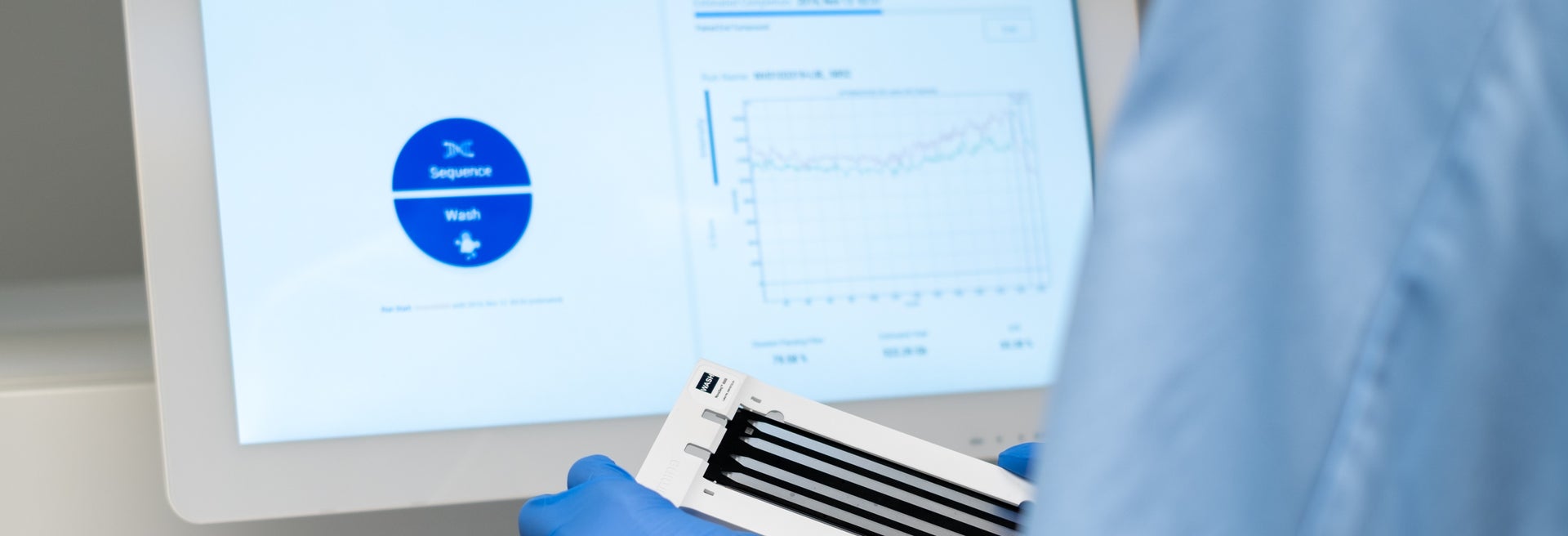Innovation in Dresden helps blood cancer patients worldwide
A great idea that continues to guide us forward: ten years ago, the DKMS Life Science Laboratory applied a particularly powerful research technology to the typing of potential stem cell donors for the first time. Upon implementation, the lab was able to type eight times as many potentially lifesaving stem cell donors as before. Today, up to 1.3 million donors are typed each year, making the DKMS Life Science Lab the world's leading HLA typing laboratory.

In the basement of the laboratory, behind the thick vault doors of the former federal bank, the cheek swab samples of more than 11.5 million potential stem cell donors are stored. These potential donors have all volunteered to help someone suffering from blood cancer by donating their stem cells if needed.
Blood cancer can affect anyone: Every year, around 1.2 million people worldwide are diagnosed with blood cancer. For many of them, a stem cell transplant is the only hope for a cure. To do this, they need a matching stem cell donor whose tissue characteristics match their own.
But, how do you find out who is the right donor for a patient? This is where the DKMS Life Science Lab, a non-profit subsidiary of DKMS, comes into play. Anyone who wants to register as a voluntary stem cell donor receives a typing kit with medical cheek swabs from DKMS. After a simple swab of the inside of the cheek, the swabs are sent in a stamped envelope to the laboratory in Dresden. There, the samples are analyzed for the donor’s HLA characteristics and various other markers.
More capacity, means more second chances at life
Up to 7,000 cheek swab samples arrive at the DKMS Life Science Lab daily. "The volume of samples that can be handled here every day is enormous," says Dr. Alexander Schmidt, Global CMO of DKMS and CEO of the DKMS Life Science Lab. "This outstanding performance capacity is vital for us at DKMS to achieve our goals: By 2030, we aim to have around 20 million potential donors registered with us, so that we can enable even more second chances at life for patients in need."
The DKMS laboratory primarily owes its outstanding performance to an innovation launched ten years ago by Chief Technology Officer Dr. Vinzenz Lange: the introduction of Next Generation Sequencing (NGS) for HLA typing. NGS is a DNA sequencing technology that had previously been used principally for whole genome analysis. The technology enables the simultaneous readout of information from millions of random DNA fragments. By using molecular "barcodes," the technology was adapted for targeted analysis of HLA characteristics in many samples. Now, it is possible to sequence more than 15,000 donors within 48 hours in ultra-high throughput.
The introduction of NGS immediately increased the typing capacity from 100,000 to around 800,000 stem cell donors per year. To date, around 10 million potential donors have been typed using this method. Each and every one of them has increased the chances of blood cancer patients worldwide finding a lifesaver.
Higher quality of typing, greater accuracy in donor selection
In addition to increasing capacity, the method has another advantage: "Today, we can analyze significantly more genetic markers," says Dr. Lange. Whereas we analyzed twelve HLA markers before, applying NGS we increased the profile to 24 HLA plus several other markers. "This comprehensive profile means that today the ideal donor can be found directly during a search. There are no longer any gaps that would have to be closed by costly retyping before the final decision is made," explains Dr. Lange. "Donor selection being optimized in this way is an important contribution to successful transplantation and helps improve patients' chances of survival and cure."
The goal: 200,000 second chances at life in 2030
Since DKMS was founded more than 30 years ago, more than 105,000 patients have already received a DKMS stem cell donation. "Without the creativity, courage, and pioneering spirit of our colleagues at the DKMS Life Science Lab, help on this large scale would not have been possible," emphasizes Dr. Schmidt. By 2030, the non-profit organization aims to have given 200,000 second chances at life worldwide. "We are not standing still and are continuously optimizing our methods and processes to provide the best possible support for DKMS in its mission," promises Dr. Lange.